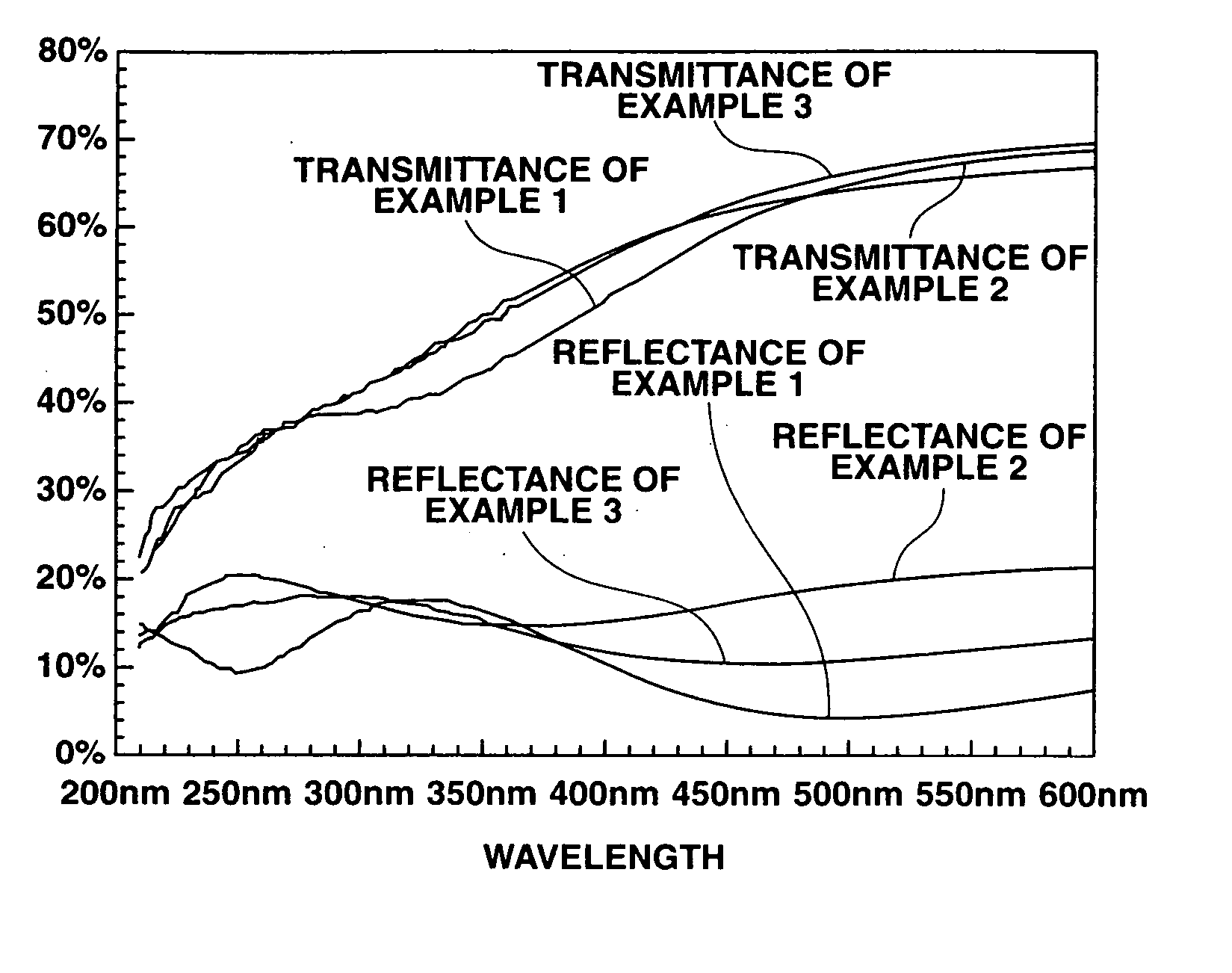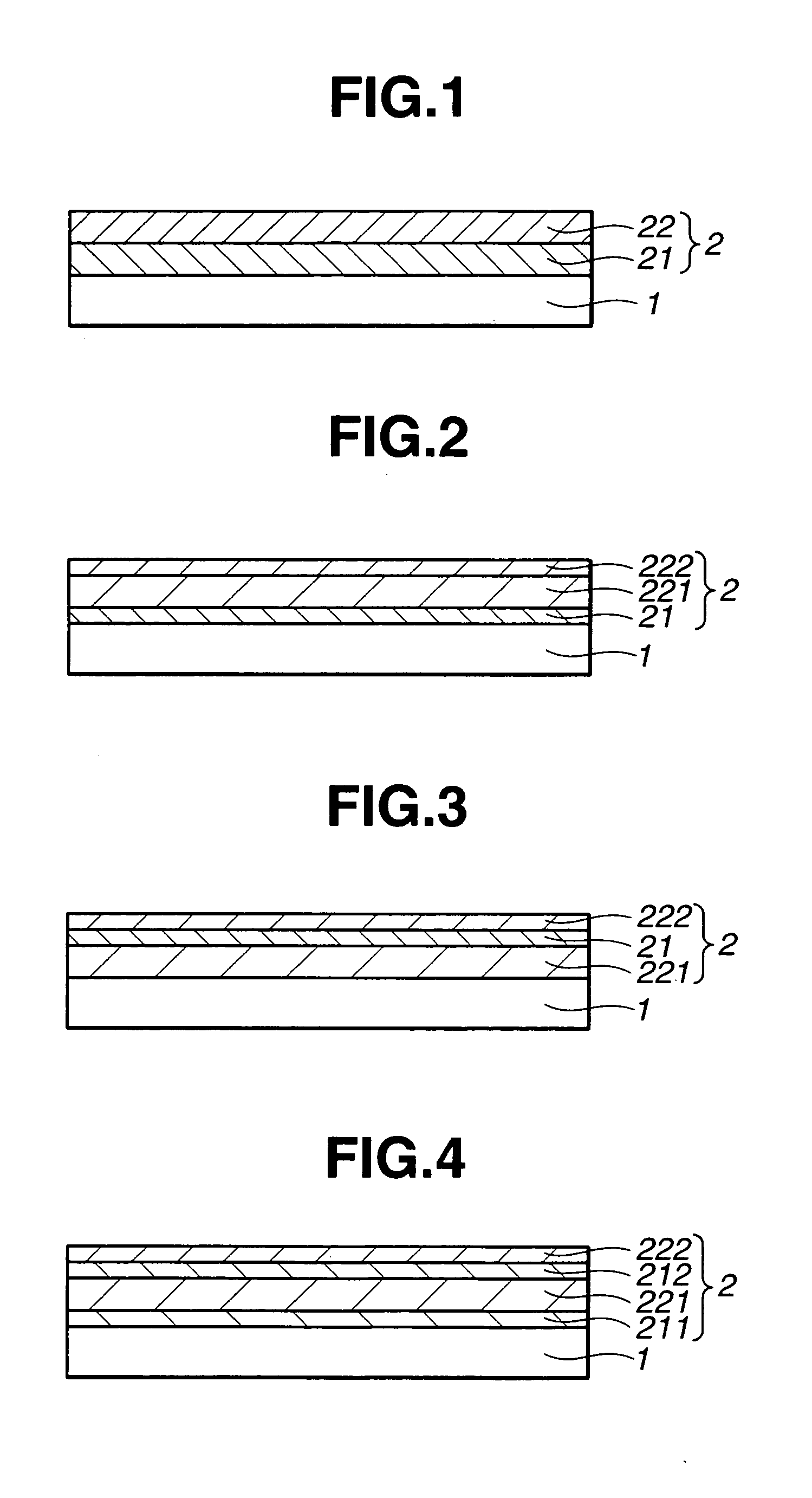Phase shift mask blank, phase shift mask, and pattern transfer method
- Summary
- Abstract
- Description
- Claims
- Application Information
AI Technical Summary
Benefits of technology
Problems solved by technology
Method used
Image
Examples
example 1
[0086] A phase shift mask blank having a phase shift multilayer film of three-layer structure deposited on a substrate as shown in FIG. 2 was prepared.
[0087] First, a light absorption function film was deposited on a quartz substrate. As the sputtering gas, Ar gas was fed at a flow rate of 15 cm3 / min. During the gas feed, a gas pressure of 0.15 Pa was set in the sputtering chamber. By applying a discharge power of 560 W across a sintered MoSi2 target and a discharge power of 1000 W across a Si single crystal target and rotating the substrate at 30 rpm, a film consisting of molybdenum and silicon (MoSi film) was deposited to a thickness of 2.5 nm, forming a light absorption function film. For the deposition, a d.c. sputtering system including two targets as shown in FIG. 13 was used (the same system was used in subsequent deposition). The system of FIG. 13 includes a chamber 101 in which a substrate 1 is rested on a rotating support 105, and a MoSi2 target 102a and a silicon target ...
example 2
[0097] A phase shift mask blank having a phase shift multilayer film of four-layer structure deposited on a substrate as shown in FIG. 4 was prepared.
[0098] The phase shift multilayer film was obtained by first depositing a first layer of light absorption function film on a quartz substrate under the same conditions as used for the light absorption function film in Example 1 except that the thickness was 1.25 nm, then depositing a first layer of phase shift function film under the same conditions as used in Example 1, depositing a second layer of light absorption function film under the same conditions as used for the first layer, and finally depositing a second layer of phase shift function film under the same conditions as used in Example 1.
[0099] The phase shift multilayer film was designed so as to provide a phase difference of 180° and a transmittance of 18% at a wavelength of 193 nm (ArF excimer laser).
[0100] The phase shift multilayer film of the thus obtained phase shift ...
example 3
[0106] A phase shift mask blank having a phase shift multilayer film of three-layer structure deposited on a substrate as shown in FIG. 3 was prepared.
[0107] The phase shift multilayer film was obtained by sequentially depositing a first layer of phase shift function film, a layer of light absorption function film, and a second layer of phase shift function film on a substrate in the described order. These layers were the same as the corresponding layers in Example 1 and deposited under the same conditions as in Example 1.
[0108] The phase shift multilayer film was designed so as to provide a phase difference of 180° and a transmittance of 18% at a wavelength of 193 nm (ArF excimer laser).
[0109] The phase shift multilayer film of the thus obtained phase shift mask blank was examined by the following tests.
Wavelength Dependency of Transmittance
[0110] The transmittance of the phase shift multilayer film was measured by the same procedure as in Example 1. The results are plotted i...
PUM
 Login to View More
Login to View More Abstract
Description
Claims
Application Information
 Login to View More
Login to View More - R&D
- Intellectual Property
- Life Sciences
- Materials
- Tech Scout
- Unparalleled Data Quality
- Higher Quality Content
- 60% Fewer Hallucinations
Browse by: Latest US Patents, China's latest patents, Technical Efficacy Thesaurus, Application Domain, Technology Topic, Popular Technical Reports.
© 2025 PatSnap. All rights reserved.Legal|Privacy policy|Modern Slavery Act Transparency Statement|Sitemap|About US| Contact US: help@patsnap.com



